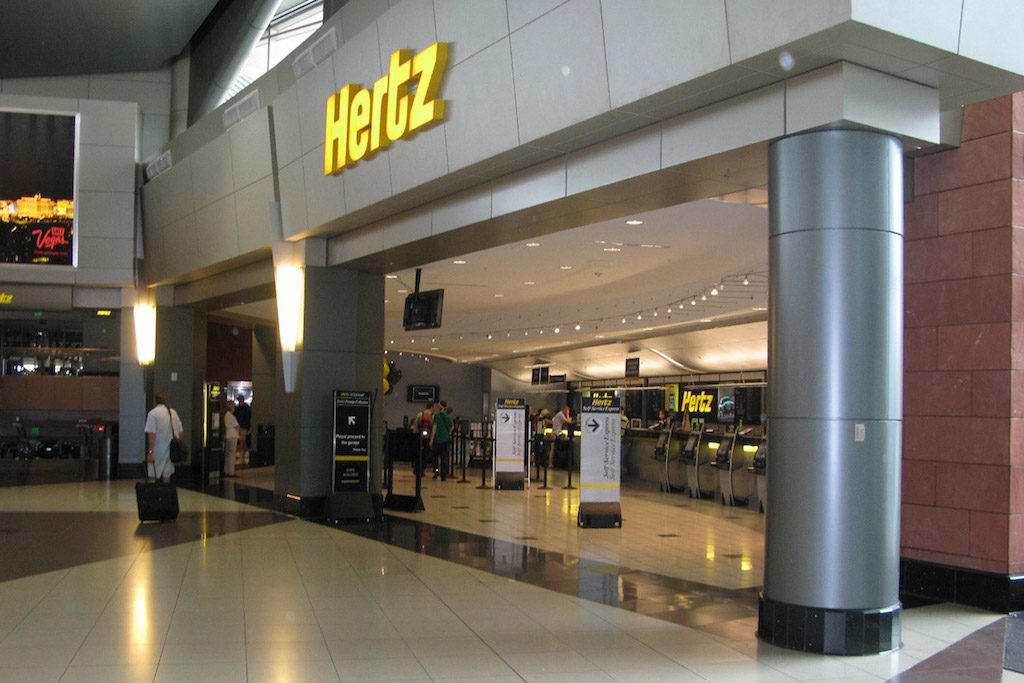Hertz and Avis Double Down on Ridehailing Strategy

Skift Take
Car rental companies Hertz and Avis have been investing in technology and alternative services to weather the advent of ridehailing apps. Although the efforts are still in early stages, they show signs of growing success.
The Hertz Corporation posted solid results Wednesday for the second quarter of 2019, driven by increased pricing from its three major brands, Hertz, Thrifty, and Dollar. The current low cost of cars helped keep overhead down, and its growing off-airport business allowed the company to raise prices. Global revenue grew 5 percent to $2.5 billion for the quarter compared to the same period a year earlier, beating estimates.
The big questions from analysts revolved around the car company’s other services, including providing vehicles for ridehailing and last-mile delivery in the U.S. In recent years, the company has lost market share as it struggles to cope with ridesharing apps such as Uber and Lyft.
“We dropped our share over the last several years based on taking our eye off the prize. Frankly, I think we're just winning our fair share back,” said Hertz CEO Kathryn Marinello on an earnings call Wednesday.
Marinello seemed confident that the company’s ridesharing efforts would be successful and see continuing growth. There is huge consumer demand for rides across major cities in the U.S., she said.
“I think there is plenty of growth for everybody right now,” she said. “There is a lot of business to go around. The demand far outweighs the vehicles and the capacity out there, and no one's better at managing, financing, and delivering fleets out of the marketplace wherever and whenever you need them than Hertz is. We have a brand and a reputation in this space and we're building that every day.”
This need for vehicles also extended to delivery, with Hertz providing vans to facilitate larger delivery services such as Amazon. The company experienced solid growth in both its ride-hailing and last-mile delivery efforts for the quarter.
With all this being said, Marinello emphasized that its core business would always be leisure and corporate travel. Revenue and price volume for this segment was strong in the U.S., but the company admitted that growth would get tougher in the second half of the year. Meanwhile, revenue was lower in Europe, where pricing was softer. The company is continuing to improve its app and website in order to drive more corporate and leisure business.
Avis Budget Group reported similar second quarter results, though revenue growth was more modest. Overall revenue was up 2 percent to $2.3 billion compared to the second quarter of the same period a year earlier, according to an earnings release Tuesday. Similar to Hertz, this revenue increase was driven largely by higher prices.
However, Avis saw lower demand in Europe, due to a reduction in intra-Europe travel, caused in part by the uncertainty surrounding Brexit, the company said.
Partnerships
Like Hertz, the car rental group has been investing heavily in alternatives to its core business in order to adapt to a landscape increasingly dominated by ridehailing apps. Avis has chosen to go at this through strategic partnerships, such as its partnership with Lyft which it announced a year ago.
During the second quarter of 2019 the company expanded its coverage through Lyft to four new cities, bringing the total up to nine cities. The car group currently has 3,000 vehicles in its Lyft fleet, and is fully integrated with the Lyft app.
Now, the company has doubled down on this strategy, partnering with Uber in much the same capacity as Lyft. Avis will provide the ridehailing app with cars for weekly rentals, which Uber drivers can use, and plans to start doing initial market launches in the next few months.
“We only do weekly rentals, so we have an opportunity to review it at the end of every week,” said Avis CEO Larry De Shon on an earnings call, in regards to the company’s Lyft partnership. “So I think we put the right parameters around it to make sure that we are pleased with the results of it. And the Uber business will follow pretty much the same guidelines. So over time, between both of them, I think this will have tens of thousands of cars as we continue to roll out the network for both companies.”
Renting out vehicles to ridehailing apps provide a way for both Hertz and Avis to make use of older vehicles which are not up to the standards of its core leisure and corporate travel business. Long term, this reduces fleet costs and is a way of clawing back market share from companies such as Uber and Lyft.
“We have created a dedicated fleet for ride-hail rentals, cascading them out of our fleet of risk cars that have reached the age where they would typically be sold,” explained De Shon. “Extending the life of our fleet allows us to lengthen ownership of our asset base.”




